This guide will tell you tips and tricks on How to Force a Snake Plant to Produce Pups so that you can multiply these plants in a jiffy!
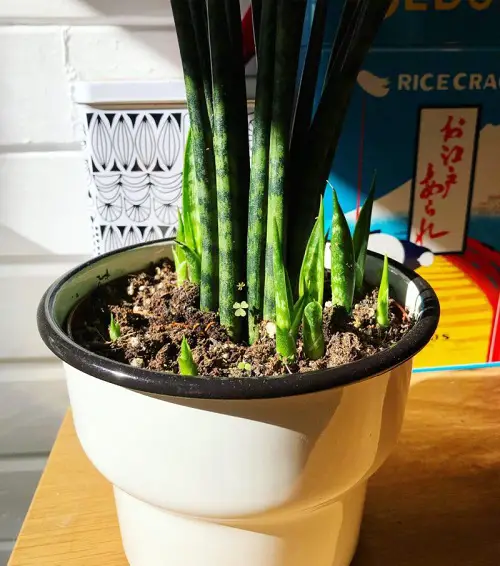
Snake plants, also known as Sansevierias, are renowned for their resilience and air-purifying qualities. While these striking plants are easy to care for, encouraging them to produce more offsets, or “pups,” can be a rewarding challenge. In this guide, we will delve into unconventional techniques on How to Force a Snake Plant to Produce Pups!
Understanding Snake Plant Pups: A Quick Overview
Pups are new growth shoots that emerge from the base of mature snake plants. These pups can be separated from the main plant to create new individuals, offering a limitless supply of Sansevierias for your collection or sharing with fellow plant enthusiasts.
How to Force a Snake Plant to Produce Pups
1. Use the Magic of Gritty Soil Mix
One of the key factors that can influence pup production in snake plants is the type of soil mix you use. While drainage is crucial, the presence of gritty components takes it a step further by mimicking the arid conditions of their native habitats.
A gritty soil mix not only prevents waterlogged roots but also encourages the parent plant to channel its energy toward producing pups.
Creating the Ultimate Gritty Soil Mix: Two Recipes
Recipe 1: Basic Gritty Mix
- Combine regular cactus or succulent potting soil with coarse sand in a 1:1 ratio.
- Add perlite or pumice in a 1:1 ratio with the soil-sand mixture.
- Mix thoroughly to ensure an even distribution of components.
- This mix provides excellent drainage while retaining a balanced amount of moisture.
Recipe 2: Advanced Gritty Mix
- Mix equal parts of cactus or succulent potting soil, coarse sand, and perlite or pumice.
- Add a small amount of crushed granite or poultry grit to the mix for extra grittiness.
- The granite or poultry grit adds weight and texture to the mix, enhancing drainage and root aeration.
When repotting or propagating your snake plant, employ the gritty soil mix to optimize pup production
2. Let the Plant Have Some Temperature Fluctuations
Give your snake plant a little taste of nature’s variety by exposing it to controlled temperature changes that can spur pup growth. Think of it as giving your plant a gentle nudge to respond to survival instincts and produce more offsets. Here’s how you can easily understand and apply this technique:
- Daytime Warmth: During the day, find a cozy spot in your home where your snake plant can soak up slightly warmer temperatures. This could be near a sunny window or an area that naturally gets a bit sun-kissed. The warmth stimulates the sunnier parts of its natural habitat, prompting the plant to respond as if it’s a great time to grow and reproduce for the sake of survival.
- Nighttime Coolness: Now, as the evening comes around, relocate your plant to a slightly cooler spot. Maybe–a corner that doesn’t get direct drafts but is a bit cooler than where it was during the day. This mimics the cooler nights that snake plants experience in their native settings. It’s like your plant is experiencing a refreshing break after a day of growth efforts.
- Plant’s Response: These gentle shifts in temperature send survival signals to your snake plant. It’s like a subtle conversation that says, “Hey, the conditions are just right for you to thrive and ensure your species’ survival by producing some pups!” These hormonal responses within the plant can lead to the emergence of new offsets.
3. Water in a Balanced Manner
Rather than adhering to a strict watering schedule, practice balanced neglect. Allow the topsoil to dry out completely between waterings. This approach encourages the plant to focus on producing pups as it adjusts to slightly drier conditions.
4. Use the Power of Controlled Fertilization
Use this trick if your snake plant has started to produce pups but you want the mother plant to increase the production. Apply the fertilizer directly to the soil around the base of the snake plant, avoiding the pups themselves.
This method provides nutrients to the parent plant while subtly urging it to prioritize pup production.
5. Prune Roots In a Timely and Strategic Way
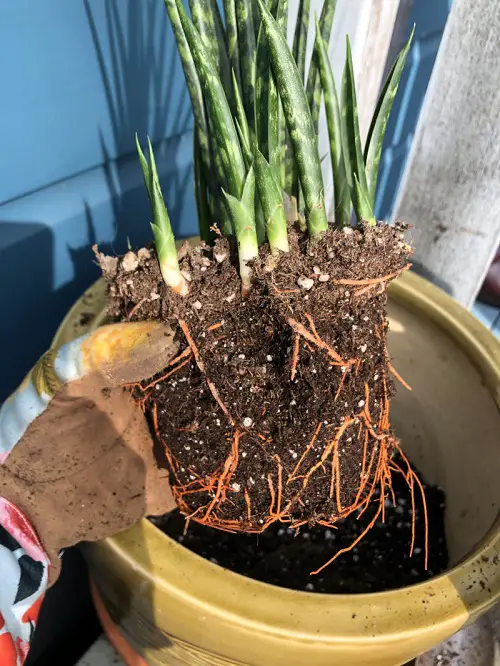
Gently lift your snake plant from its pot and inspect the root system. Carefully trim some of the outer roots, but avoid disturbing the central root mass.
This root pruning technique simulates natural stress and can prompt the plant to generate pups as a survival response.
6. Natural Light Variations
Expose your snake plant to subtle variations in natural light. Move it to a spot where it receives slightly more indirect sunlight than usual.
This adjustment can encourage increased pup production as the plant senses the need to reproduce in response to environmental changes.
7. Use the Natural Elixir – Coconut Water
Consider using diluted coconut water as a natural hormonal stimulant for your snake plant. The natural cytokinins in coconut water can potentially encourage the growth of pups.
Apply the diluted coconut water (1 part of it with 2 parts water) to the soil once a month during the growing season.
8. Control Container Size to Keep the Plant Slightly Root Bound
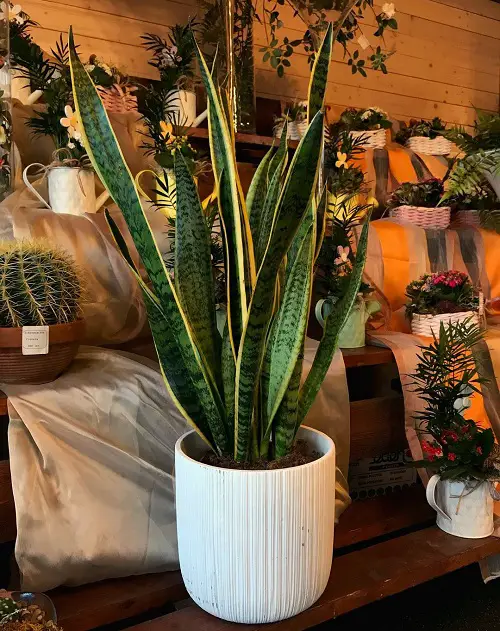
Age and Pup Production

Keep in mind that the age of your snake plant plays a role in pup production. Mature plants are more likely to produce pups than younger ones.
- Better Nutrient Uptake: Mature plants have a robust root system that can absorb nutrients more efficiently, contributing to overall growth and pup production.
- Stability: The well-established roots provide stability, allowing the plant to put energy into growing pups rather than basic survival.
- Energy Shift: As snake plants mature, they shift their energy from growing in size to reproducing. This reproductive focus leads to pup production.
- Survival Strategy: Producing pups is part of the plant’s natural propagation strategy. Mature plants have reached a stage where they can ensure the continuation of their species through pup production.
- Hormonal Balance: In mature snake plants, hormones that regulate growth and development are in balance, stimulating the formation of pups.
- Triggering Mechanism: Specific hormonal signals in mature plants initiate the growth of new pups, a process that younger plants might not yet have developed.


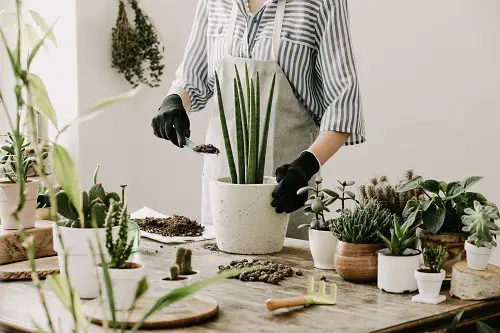
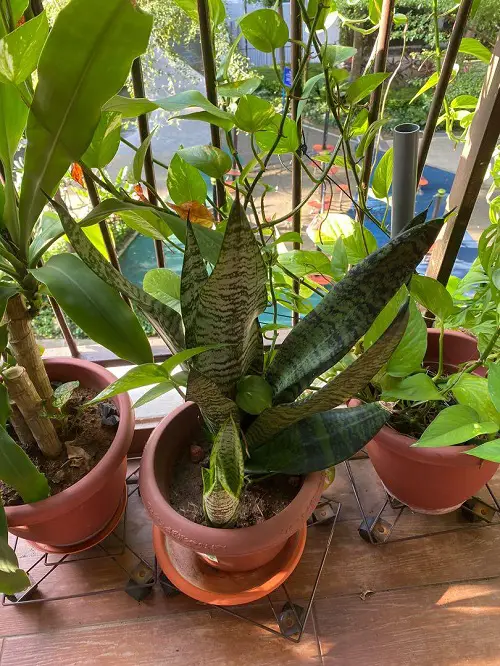
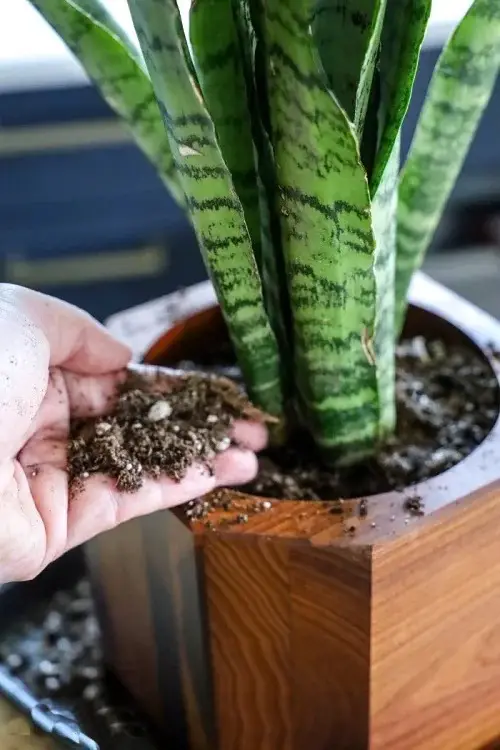
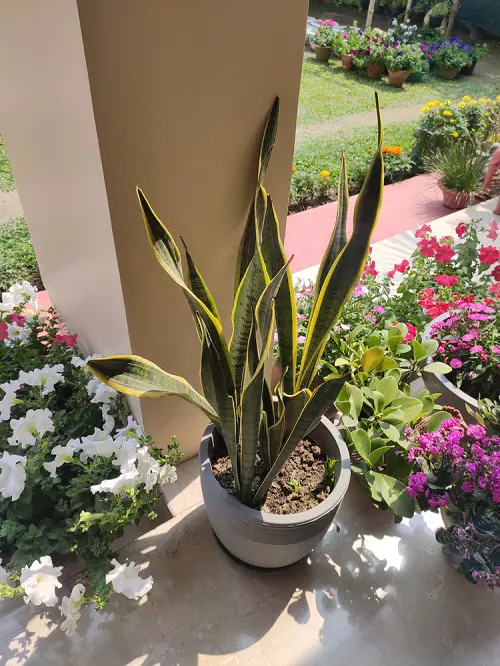
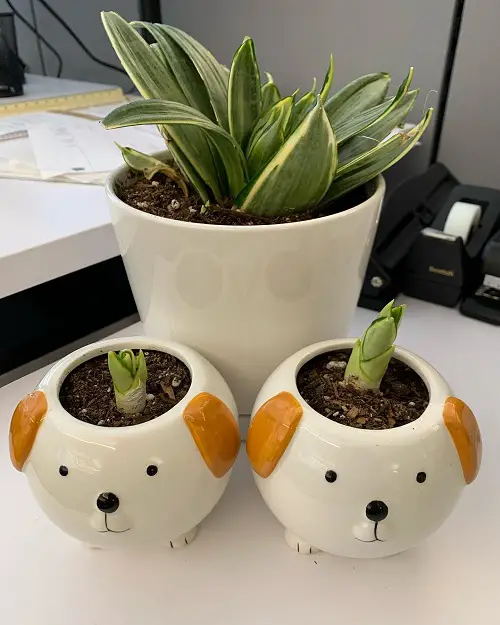

This article provides the best information regarding snake plant care and reproduction. I’m going to mix up a batch of soil for repotting today! 😊 Thank you,
Denise K